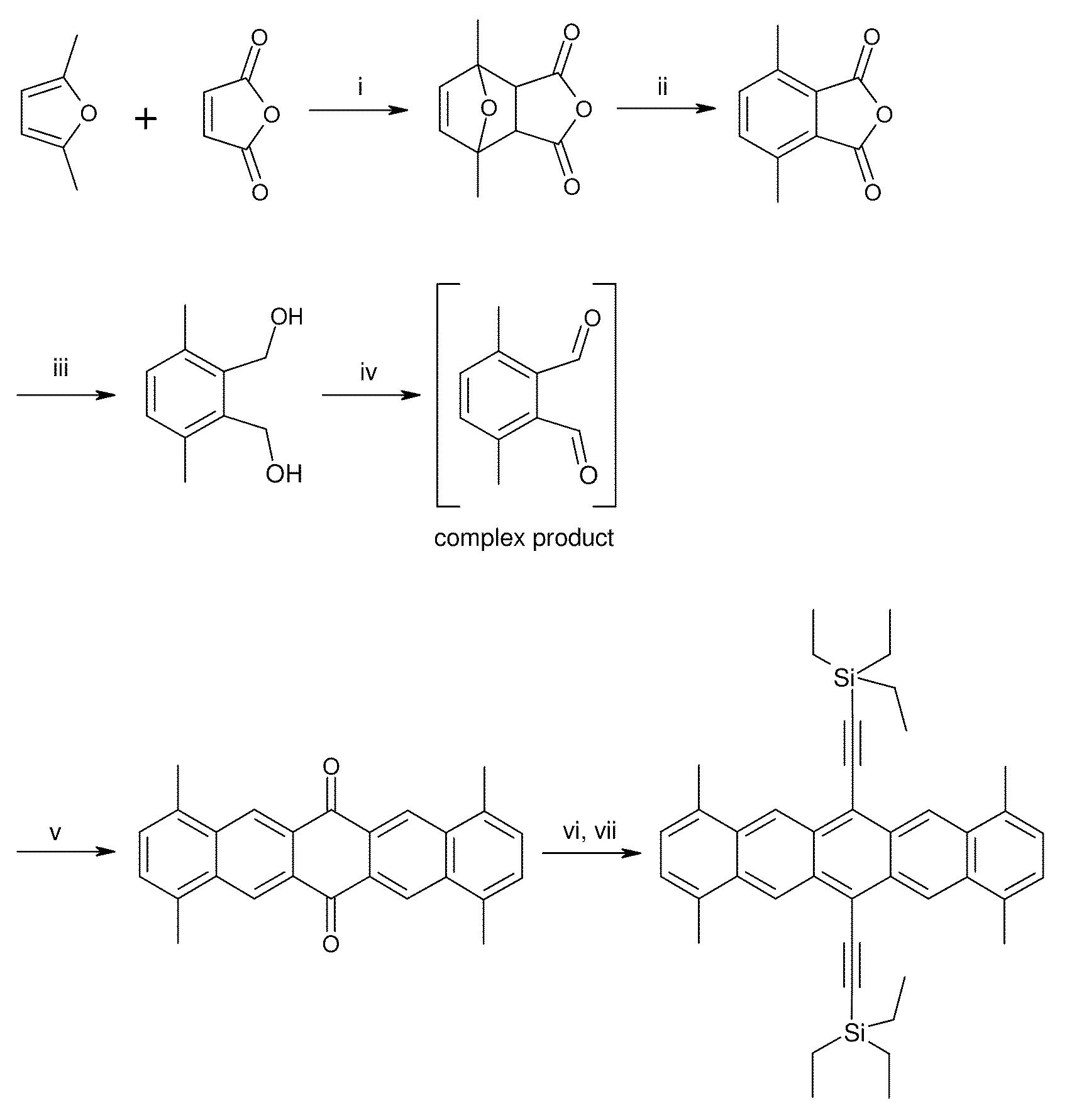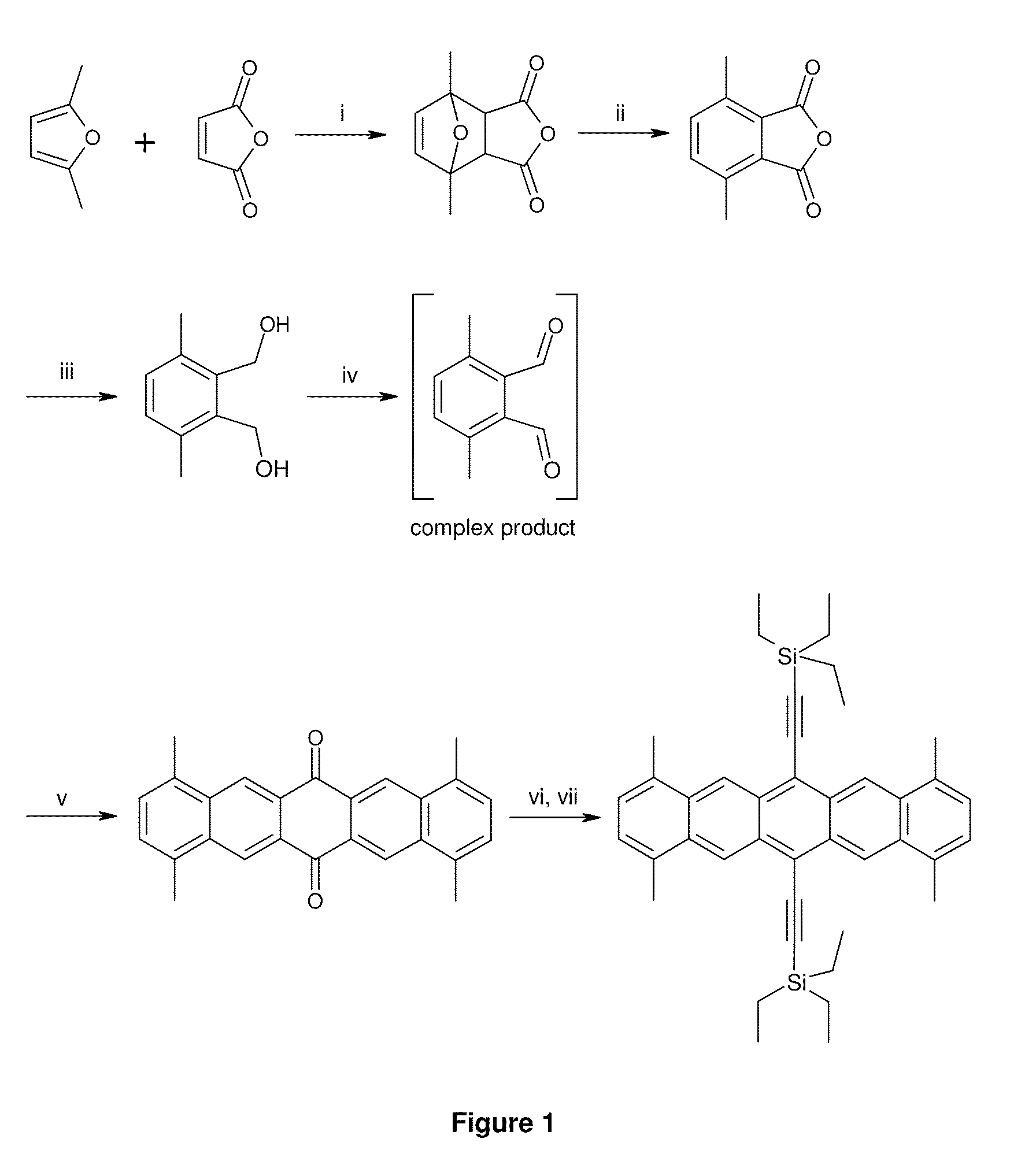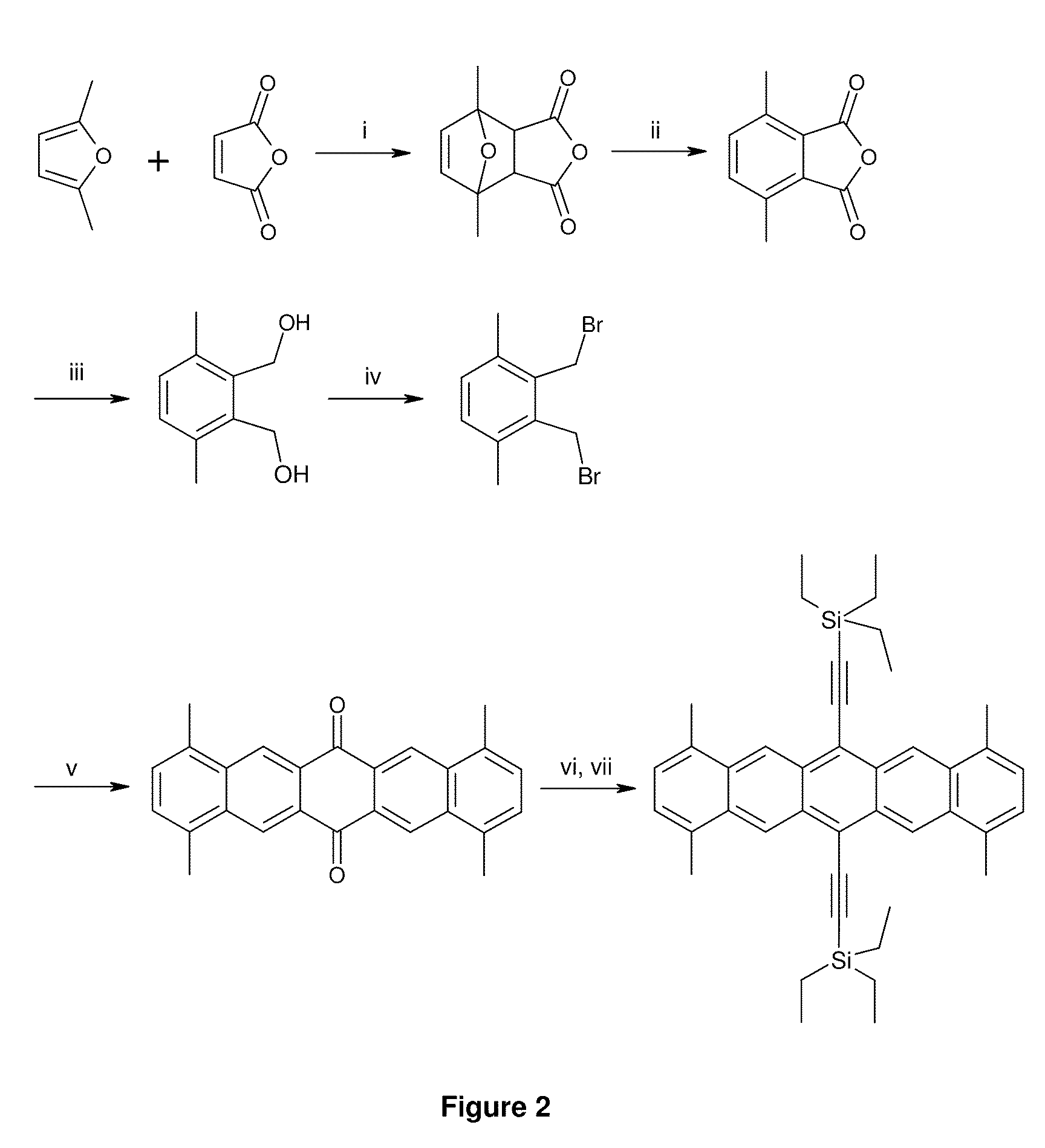Process for Preparing Substituted Pentacenes
a pentacenes and process technology, applied in the field of process for preparing substituted pentacenes, can solve the problems of difficult control, complex method, and high cost of vapour deposition equipmen
- Summary
- Abstract
- Description
- Claims
- Application Information
AI Technical Summary
Benefits of technology
Problems solved by technology
Method used
Image
Examples
example 1
[0177]1,4,8,11-Tetramethyl-6,13-bis(triethylsilylethynyl)pentacene (9) is prepared as described below.
1,7-Dimethyl-4,10-dioxa-tricyclo[5.2.1.02,6]dec-8-ene-3,5-dione 1
[0178]
[0179]A 100 mL 3-necked RBF is fitted with a mechanical stirrer, a condenser and a subaseal, and placed under nitrogen. Maleic anhydride (25.5 g, 0.260 mol) and anhydrous diethyl ether (35 mL) are charged to the RBF. 2,5-Dimethylfuran (27.7 mL, 0.260 mol) is added via syringe over a period of 20 mins to the suspension at 22° C. The reaction mixture is stirred for 18 h. The product is filtered off, washed with cold diethyl ether (100 mL), and dried under vacuum to yield the product 1 as a cream solid (36.32 g, 72%): 1H-NMR (300 MHz, CDCl3) δ 6.35 (s, 2H), 3.16 (s, 2H), 1.76 (s, 6H).
4,7-Dimethyl-isobenzofuran-1,3-dione 2
[0180]
[0181]1,7-Dimethyl-4,10-dioxa-tricyclo[5.2.1.02,6]dec-8-ene-3,5-dione 1 (30.0 g, 0.150 mol) is added slowly in portions to stirred 98% sulfuric acid (300 mL) in a 1 L flange flask cooled to −5...
example 2
[0196]A top gate OFET device as exemplarily shown in FIG. 6 is prepared as described in WO 2005 / 055248 A2. Compound (9) of example 1 is dissolved with the binder material poly(alpha-methylsyrene) (1:1 ratio) at 4% total solids content in tetralin. The resulting solution is spin-coated upon masked Pt / Pd patterned source / drain electrodes on a PEN substrate. A solution of the dielectric material Lisicon™ D139 (commercially available from Merck KGaA, Darmstadt, Germany) is used as the gate insulator layer. A gold gate contact is provided onto the coated and dried gate insulator layer by evaporation through a shadow mask.
[0197]The device performance is measured as described in WO 03 / 052841 A1. FIG. 7 shows the transfer characteristics, mobility and on / off ratio of the OFET. The device shows high mobility and a high on / off ratio:
μlin=6.3 cm2 / Vs (linear mobility)
Ion / Ioff=7×103 (current on / off ratio)
PUM
| Property | Measurement | Unit |
|---|---|---|
| boiling point | aaaaa | aaaaa |
| temperatures | aaaaa | aaaaa |
| boiling points | aaaaa | aaaaa |
Abstract
Description
Claims
Application Information
 Login to View More
Login to View More - R&D
- Intellectual Property
- Life Sciences
- Materials
- Tech Scout
- Unparalleled Data Quality
- Higher Quality Content
- 60% Fewer Hallucinations
Browse by: Latest US Patents, China's latest patents, Technical Efficacy Thesaurus, Application Domain, Technology Topic, Popular Technical Reports.
© 2025 PatSnap. All rights reserved.Legal|Privacy policy|Modern Slavery Act Transparency Statement|Sitemap|About US| Contact US: help@patsnap.com



